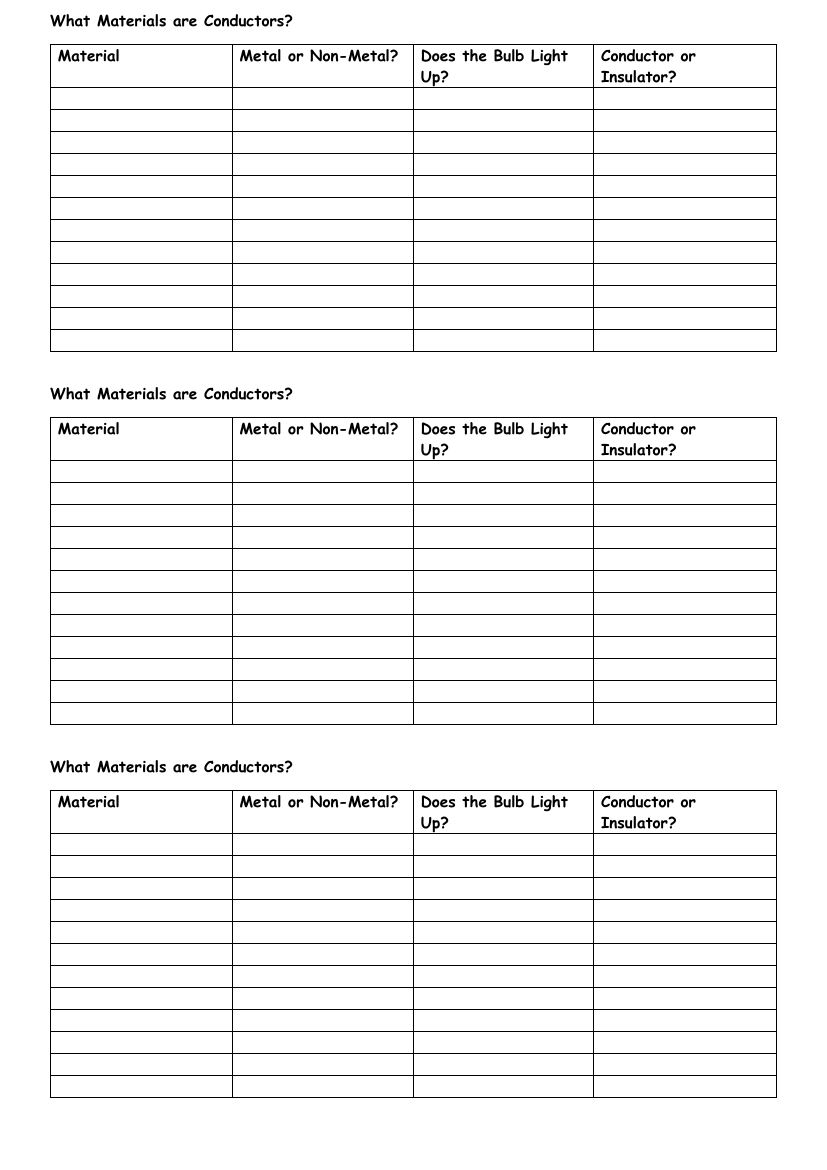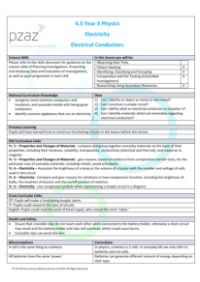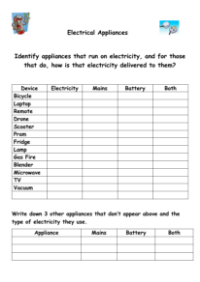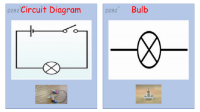Electrical Conductors - Results Tables

Science Resource Description
In a series of experiments designed to investigate electrical conductivity, a results table is used to record whether various materials are conductors or insulators. The table is organized with columns for the material being tested, its classification as metal or non-metal, the observation of whether a bulb lights up when the material is introduced into an electrical circuit, and the final determination of the material as a conductor or an insulator. The outcome of the bulb lighting up is a key indicator of the material's ability to conduct electricity.
The repeated structure of the table across multiple experiments allows for a clear comparison between different materials. For each material tested, if the bulb lights up, it suggests that the material is a good conductor of electricity, allowing the current to pass through and illuminate the bulb. Conversely, if the bulb remains unlit, the material is likely an insulator, impeding the flow of electric current. This simple yet effective method provides a visual and practical way to classify materials based on their electrical properties, aiding in the understanding of conductors and insulators in the context of electrical circuits.







